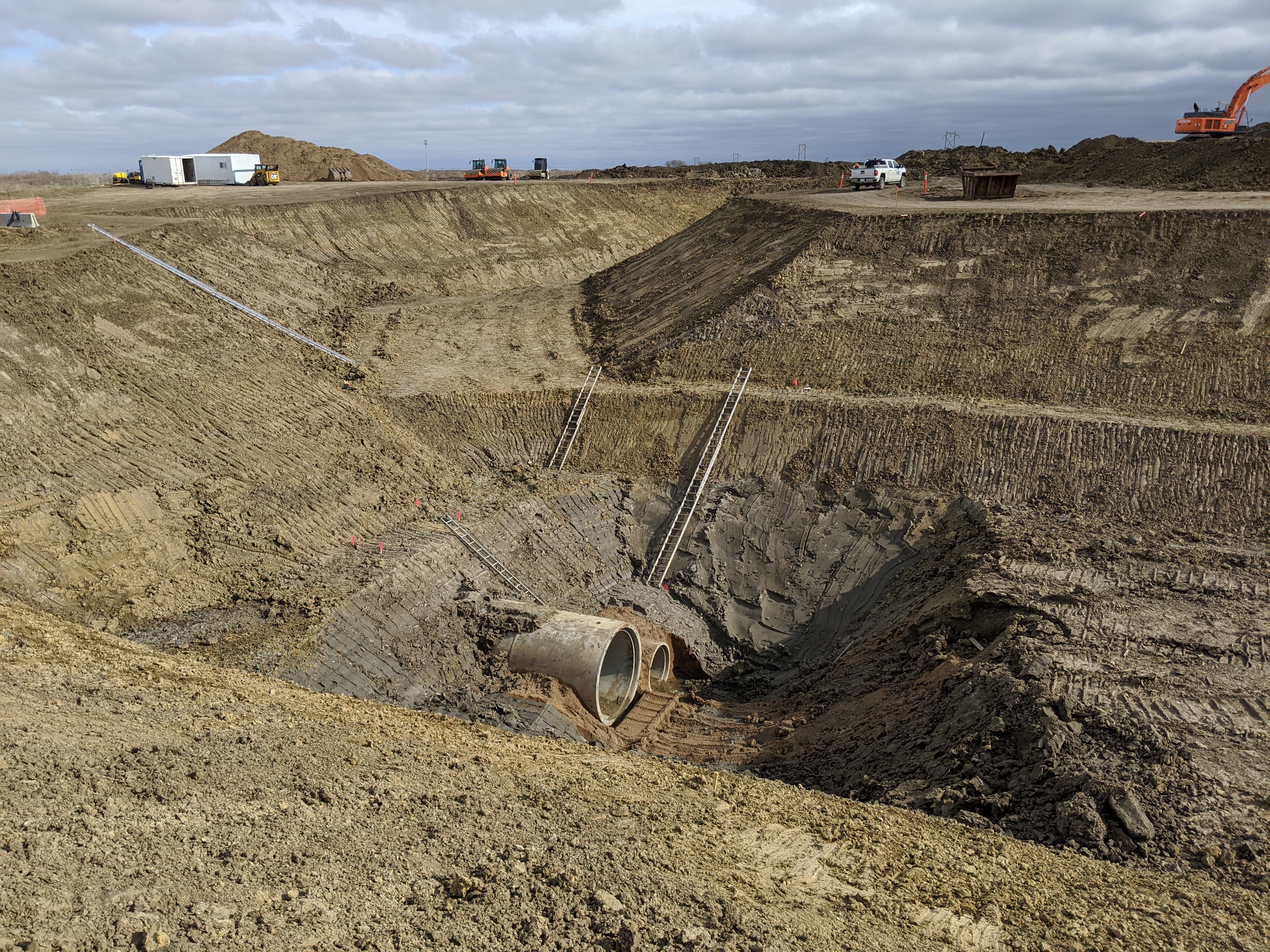Adding sewage capacity to a growing community
The McOrmond Trunks and Primary Watermains project, led by CIMA+ and constructed by HAMM Construction, expanded sewage capacity for the growing Brighton community in Saskatoon. Delivered under a design-build contract, the project involved installing a common trench sanitary and storm sewer system at depths ranging from 10 to 12 metres.
Two major sewer trunks were constructed:
- A 1,650-metre-long, 2,100-millimetre-diameter reinforced concrete storm sewer trunk, reaching depths of up to 13.7 metres.
- A 1,650-metre-long sanitary sewer trunk, using reinforced concrete pipe ranging from 1,200 to 900 millimetres in diameter, installed at depths of up to 14.7 metres.
Thurber served as the geotechnical lead, while EDI Environmental Dynamics provided environmental services.
Geotechnical challenges and solutions
One of the project’s primary challenges was the area's difficult soil conditions. Thurber developed a trench design plan with variable slope angles tailored to different segments of the alignment. We also identified zones where groundwater from an underlying sand aquifer could pose stability risks and installed instrumentation to monitor groundwater levels. This instrumentation also tracked groundwater response during the contractor’s dewatering well installation.
Environmental challenges and solutions
The project included significant environmental work. Thurber conducted a Phase II Environmental Site Assessment (ESA) and oversaw remediation of salt-contaminated soils at the City of Saskatoon’s Nicholson Yards, a component of the McOrmond Trunks project.
During excavation planning, Thurber determined that adhering strictly to the City’s Corrective Action Plan would require removing a much larger volume of soil than originally estimated. This was due to native soils beneath the impacted layer also exceeding environmental guidelines. To address this, Thurber performed a more detailed analysis to distinguish between anthropogenic salt contamination and naturally occurring high salt concentrations. This allowed the use of less restrictive environmental criteria.
As a result, Thurber significantly reduced project costs and avoided unnecessary soil removal—preserving the feasibility of completing the McOrmond project as originally designed.
This project won an ACEC-SK Award of Merit for Municipal Infrastructure and Water Resources.


